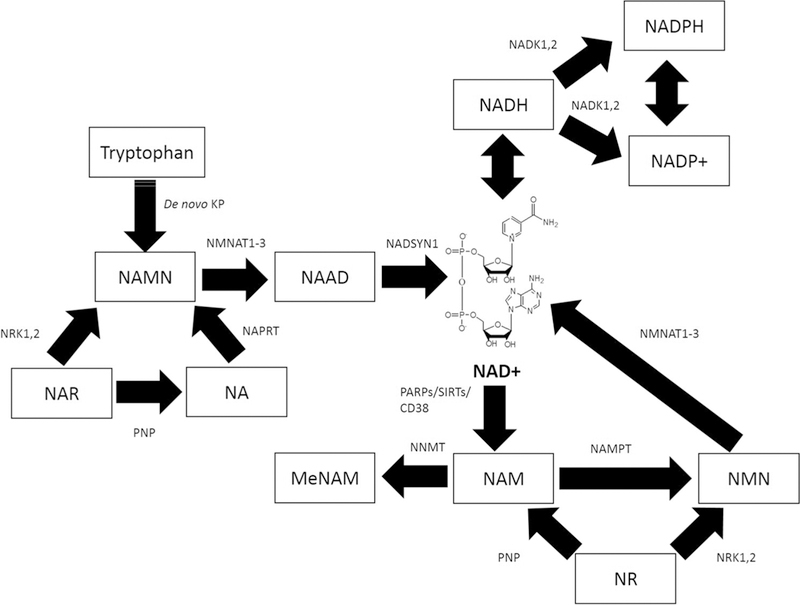Fig. 1.

Intracellular NAD+ metabolism in eukaryotic cells. NAD+ can be synthesised from tryptophan, through the de novo KP. NAM, NA, NR, and NAR can act as NAD+ precursors via the salvage pathway. NAM can be converted to NMN by the enzyme NAMPT which is then converted to NAD+ by nicotinamide mononucleotide adeny-lyltransferase (NMNAT1–3). NAM can be methylated to N-methyl-nicotinamide (MeNAM) as a waste product by the catalytic activity of nicotinamide N-methyltransferase (NNMT). NAD+ can also be reduced to NADH, phosphorylated to NADP+ and further reduced to NADPH in reactions involving NAD kinases (NADK1,2). NAD+ can also be consumed by PARPs, Sirtuins, and CD38 NAD+ glycohydrolases to form NAM. NA can be metabolised to NAMN by the enzyme NAPRT which is then converted to NAD+ by the action of NMNAT1–3. NAR can be converted to NAMN required for NAD+ synthesis via the activity of nicotinamide riboside kinases (NRK1,2). NRK1,2 are also required for the conversion of NR to NMN and leading to NAD+ synthesis. NAR can also form NA via the action of purine nucleoside phosphorylase (PNP). PNP also converts NR to NAM
